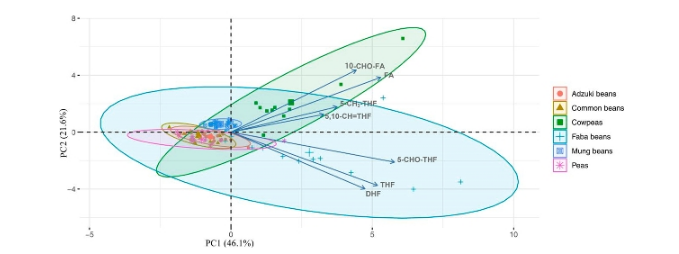Abstract:
Pulses are good natural sources of micronutrients. In this study, the concentration and composition of folates in seeds of 102 pulse varieties newly-developed in China, including mung beans, adzuki beans, cowpeas, faba beans, peas, and common beans, were analysed. The total folate content ranged from 21 to 278 4g/100 g dry
weight (DW) among these pulse crops, with the highest in faba beans (88-278 4g/100 g DW), followed by cowpeas (101-246 4g/100 g DW), and the lowest in common beans (21-66 ug/100 g DW). 5-Formyltetrahydro-folate and 5-methyltetrahydrofolate were the two dominant folate vitamers. In addition, the effect of soaking(30 °C for 12 h) and boiling (100 °C for 20 min) on folate retention in pulses was evaluated. Compared to the unprocessed pulses, a 1.41-fold (average) enhancement of total folates was observed in soaked pulses. Folate
retention ratios in boiled pulses depended on varieties, ranging from 64% to 82%, with the average of 76%. During the boiling process, 13% of total folates was lost through leaching and 299 by heating degradation on average. This research provides an overview of folate content and retention in raw and cooked pulses. The results will help to guide industrial or household preparation of pulses to maximise folate retention and the identified pulse varieties rich in folates could be for direct use or as breeding materials for folate biofortification.
Keywords:Pulses;;Folates;;Folate content;;Folate analysis;;Food preparation;;Soaking;;Boiling



